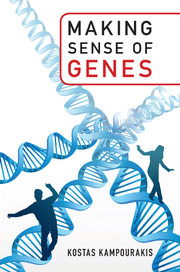Book contents
- Making Sense of Genes
- Making Sense of Genes
- Copyright page
- Dedication
- Contents
- Acknowledgments
- Prolegomena
- 1 Mendel and the Origins of the “Gene” Concept
- 2 The Genes of Classical Genetics
- 3 The Molecularization of Genes
- 4 So, What Are Genes?
- 5 “Genes for” (Almost) Everything
- 6 Are There “Genes for” Characters?
- 7 Are There “Genes for” Diseases?
- 8 So, What Do Genes Do?
- 9 Genes Are Implicated in the Development of Characters
- 10 Genes Account for Variation in Characters
- 11 Genomes Are More than the Sum of Genes
- 12 Limitations in the Study of Genomes
- Concluding Remarks: How to Think and Talk about Genes?
- Further Reading
- References
- Glossary
- Index
- References
References
Published online by Cambridge University Press: 13 April 2017
- Making Sense of Genes
- Making Sense of Genes
- Copyright page
- Dedication
- Contents
- Acknowledgments
- Prolegomena
- 1 Mendel and the Origins of the “Gene” Concept
- 2 The Genes of Classical Genetics
- 3 The Molecularization of Genes
- 4 So, What Are Genes?
- 5 “Genes for” (Almost) Everything
- 6 Are There “Genes for” Characters?
- 7 Are There “Genes for” Diseases?
- 8 So, What Do Genes Do?
- 9 Genes Are Implicated in the Development of Characters
- 10 Genes Account for Variation in Characters
- 11 Genomes Are More than the Sum of Genes
- 12 Limitations in the Study of Genomes
- Concluding Remarks: How to Think and Talk about Genes?
- Further Reading
- References
- Glossary
- Index
- References
- Type
- Chapter
- Information
- Making Sense of Genes , pp. 265 - 294Publisher: Cambridge University PressPrint publication year: 2017



